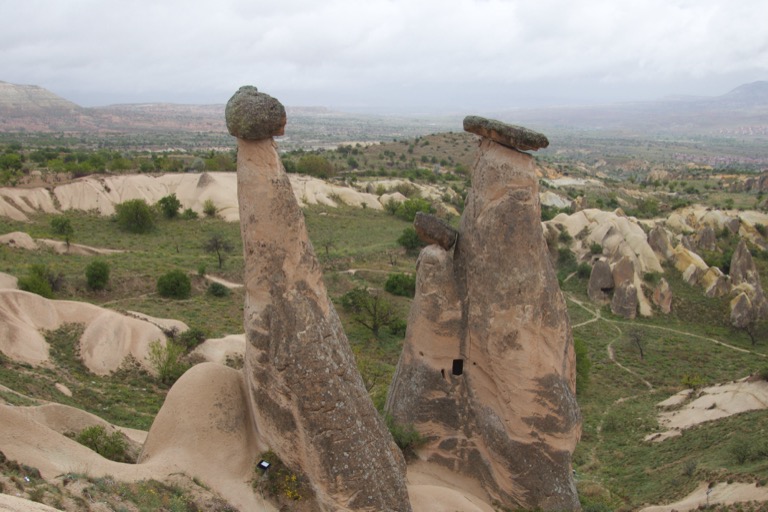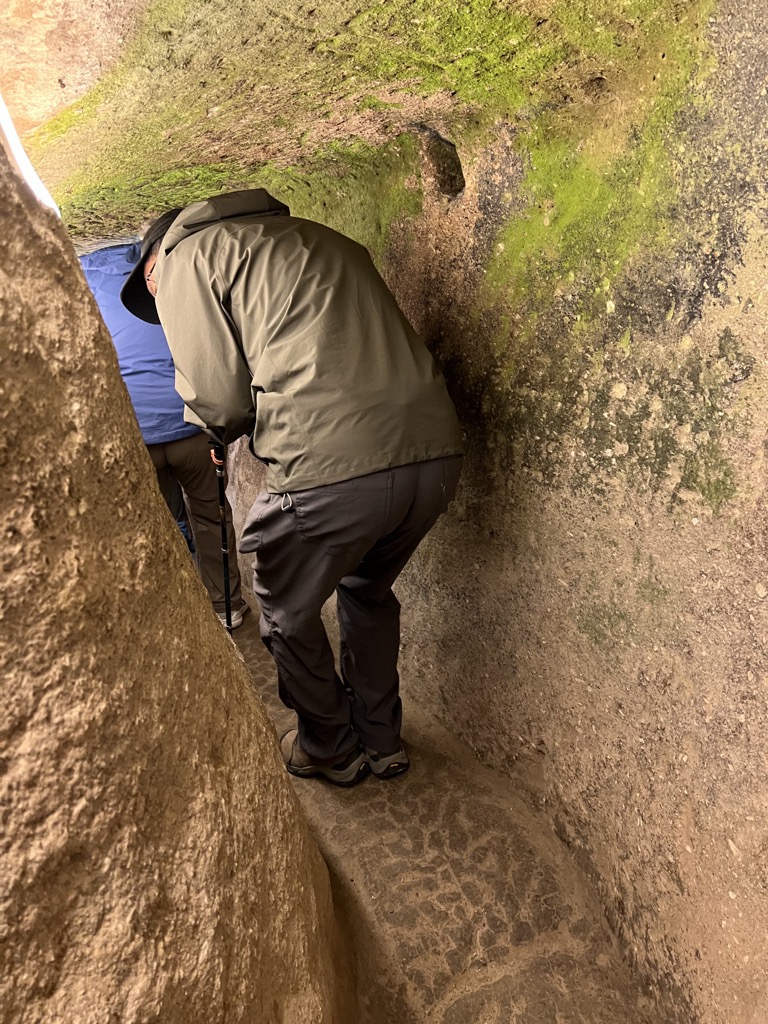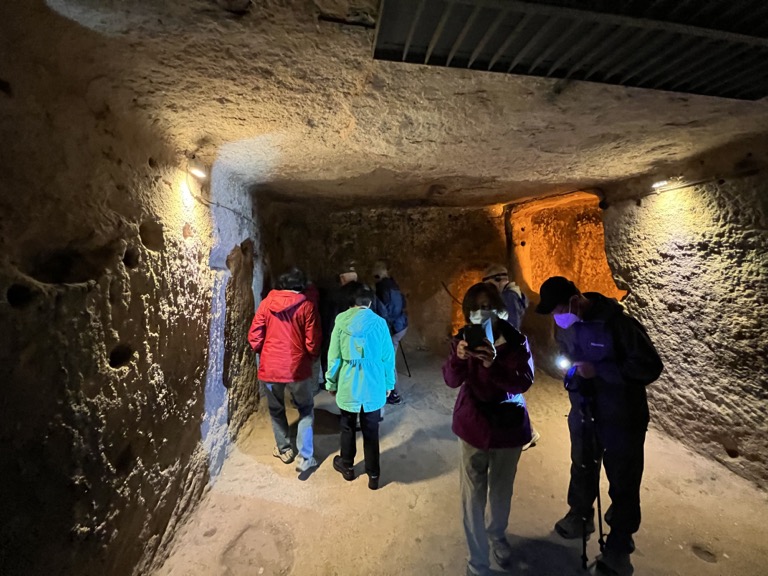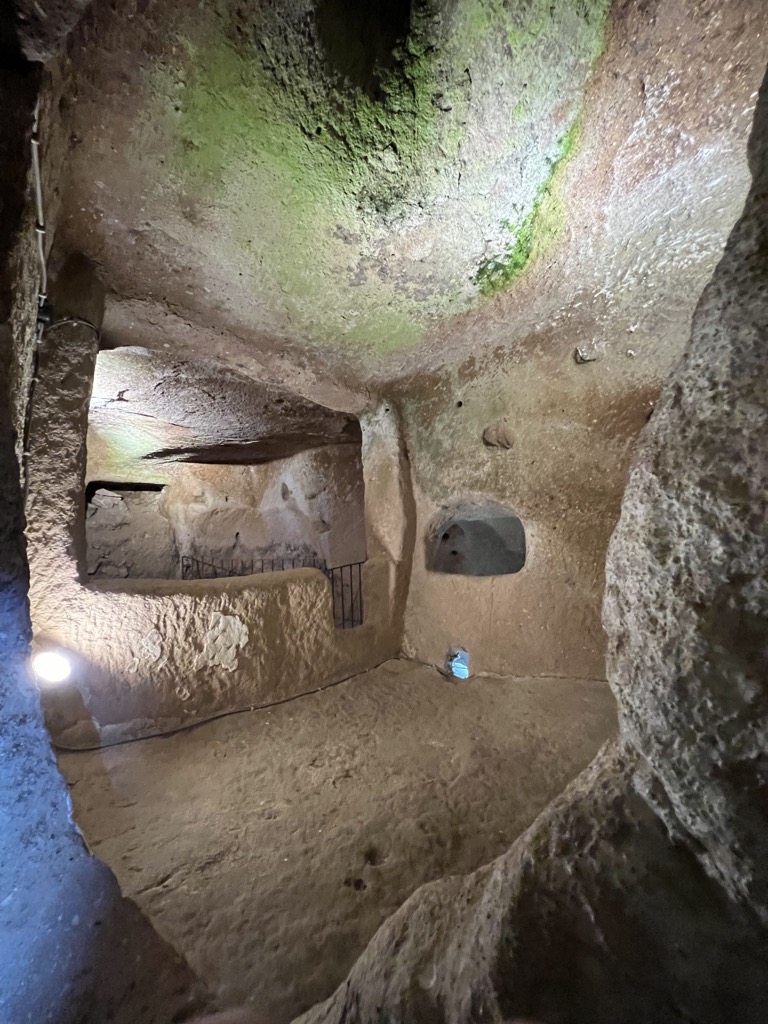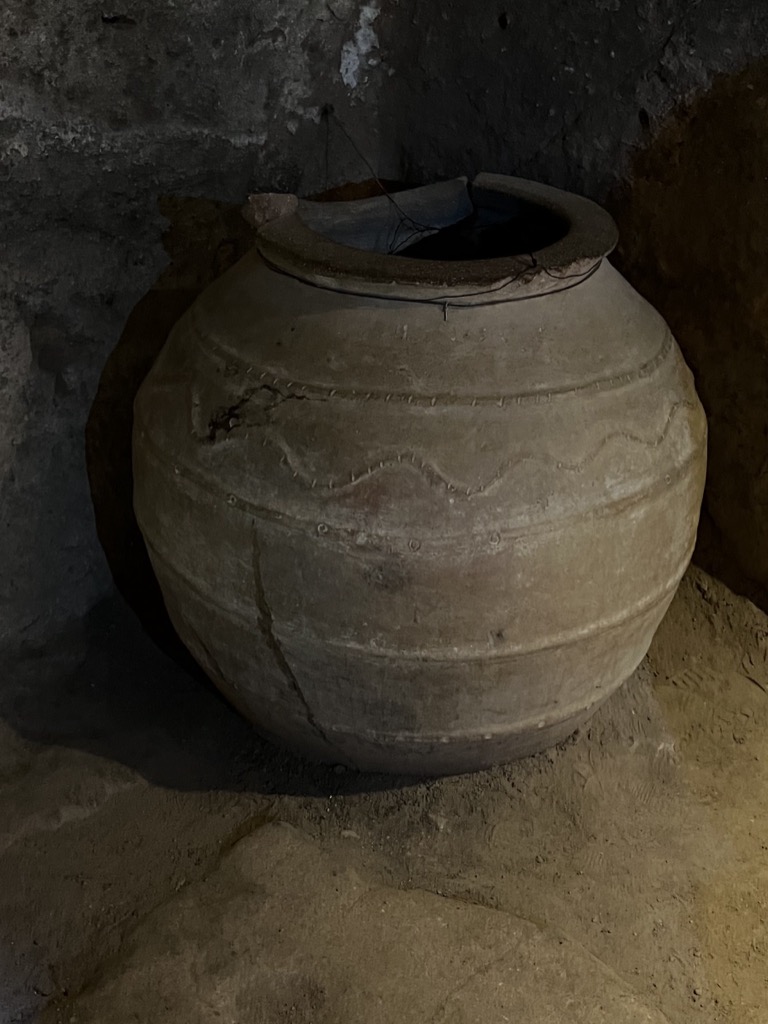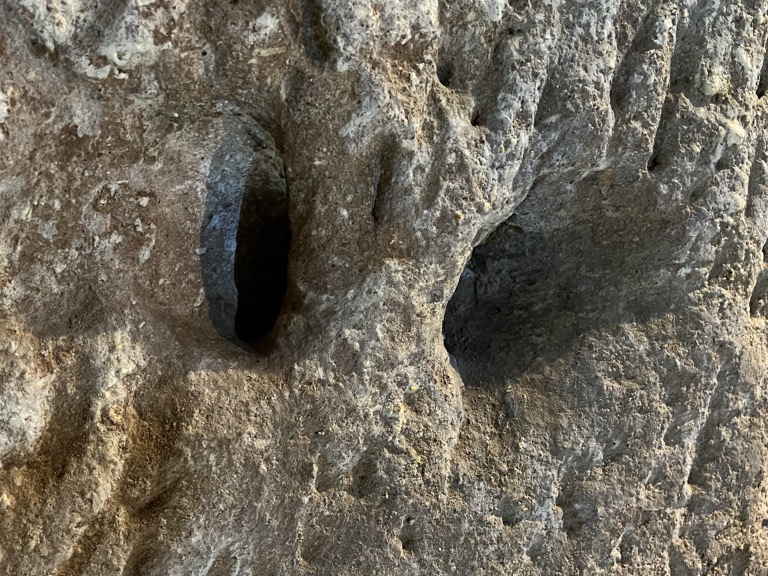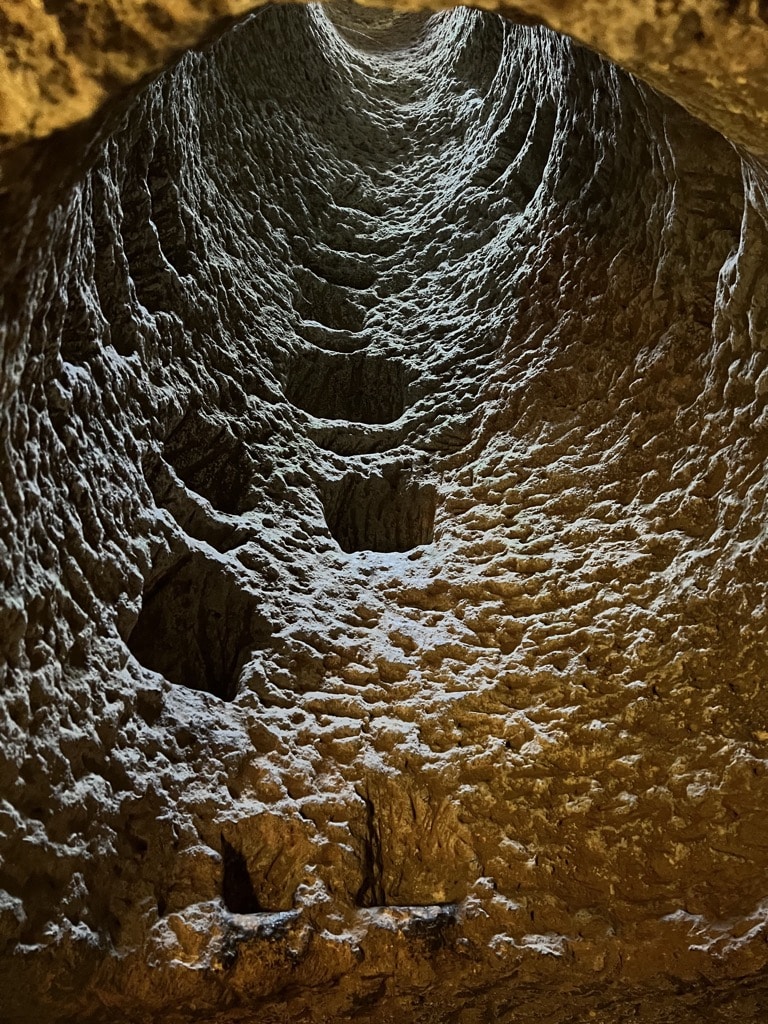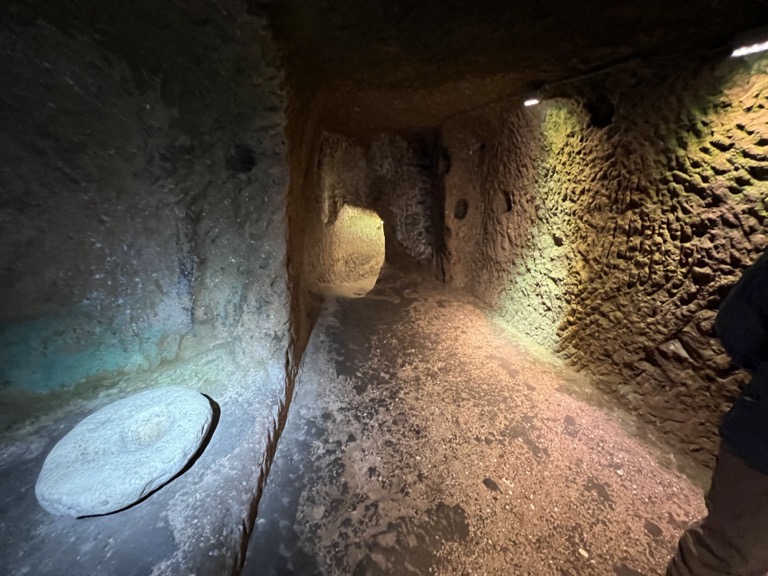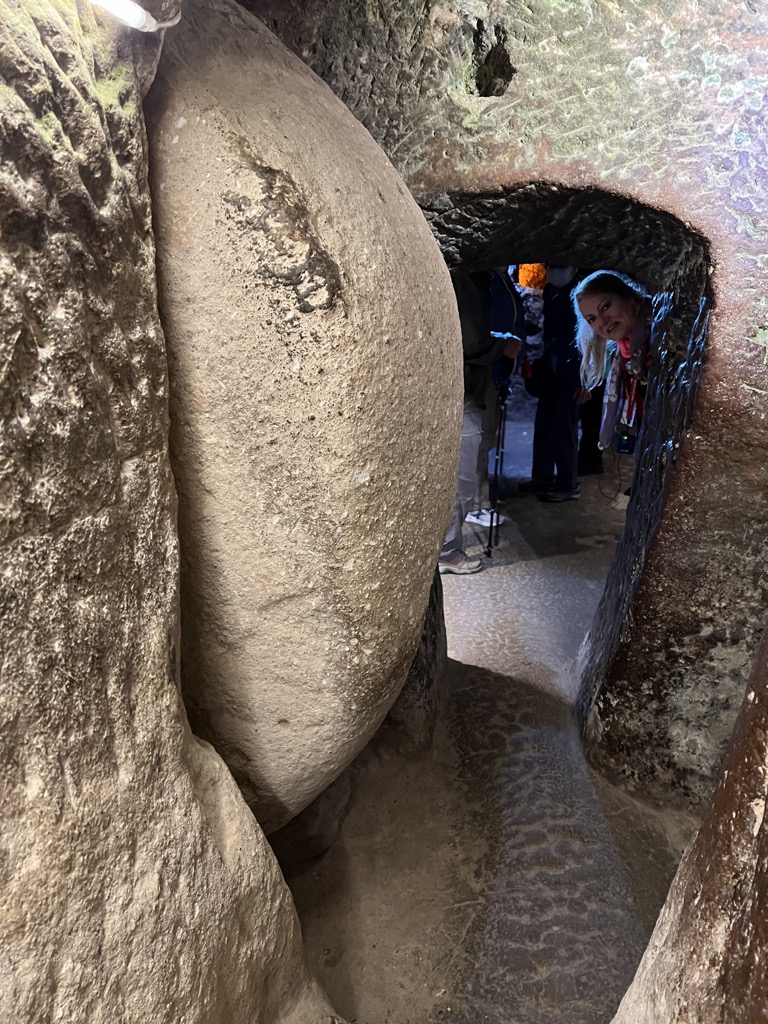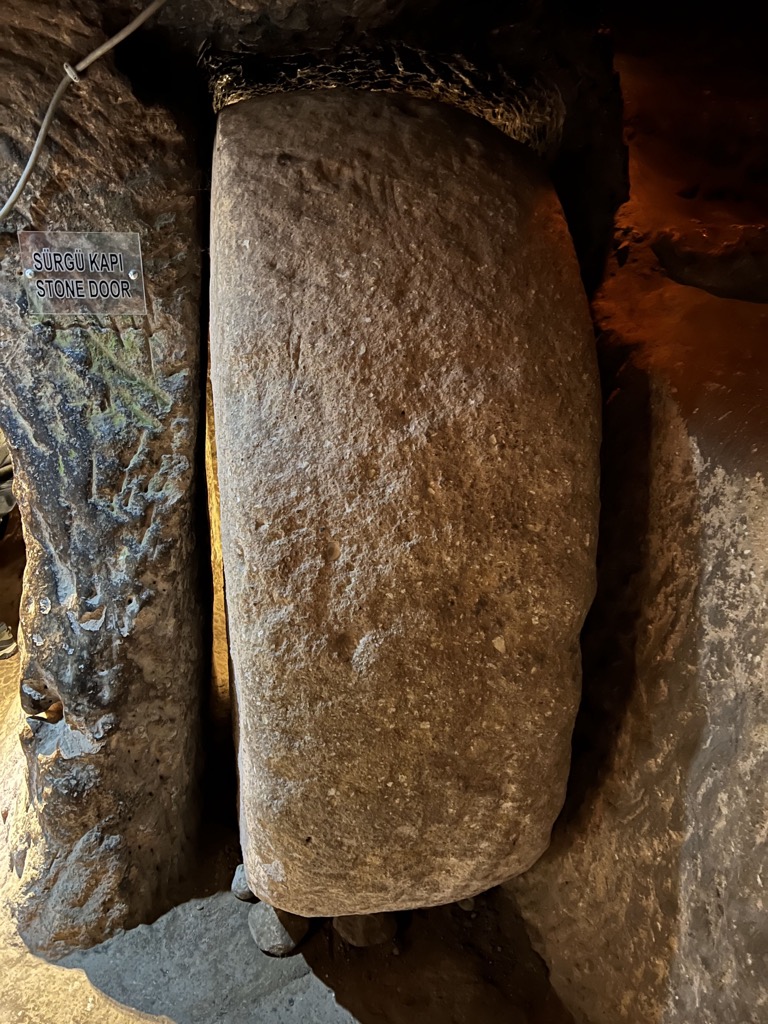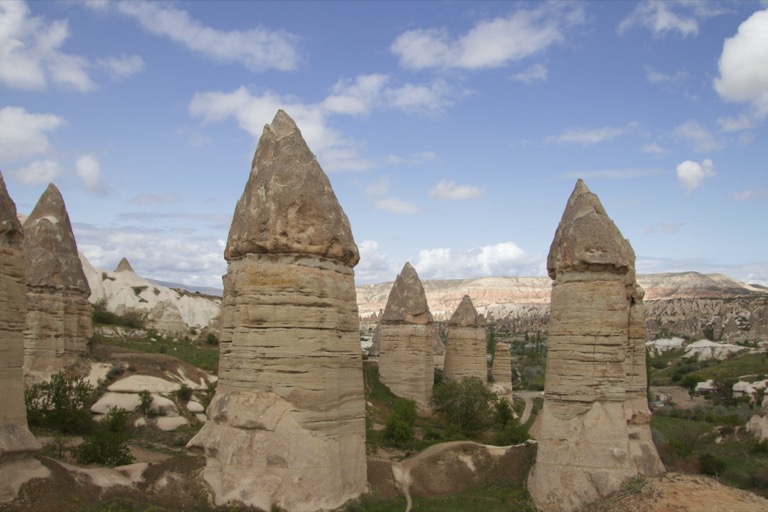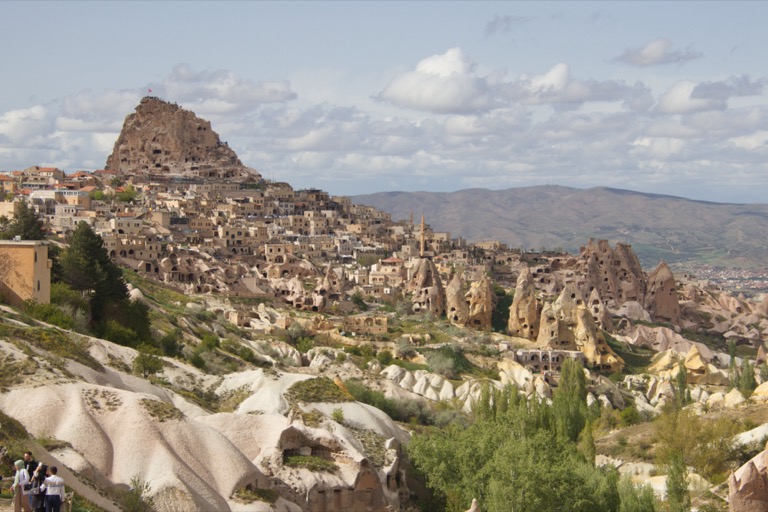on
Cappadocia Day 3
Today we started with a quick visit to the three sisters formation since it wasn’t raining yet, but would rain later in the morning.
This shows how the harder layers on top protected the softer layers below from eroding away. Because the layers were laid down at different times, sometimes water does get in and erodes one side causing the tilt in the upper layer.
We then stopped at a Turkish carpet shop, they showed us how the carpets are made, explaining the difference between the double knot used in Turkish carpets and the single knot used in neighboring countries. They explained the use of wool, cotton and silk in the carpets and how that affects the density of the knots, from 3 per centimeter up to 20+ per cm for fine silk wall hangings. They showed examples of three-dimensional piles (different pile lengths to make the image stand out more), like a wicker basket handle that made each wicker strand rounded. Silk highlights can almost sparkle in a wool carpet. No photos allowed, but it was educational.
Next, we visited the Özkonak Underground City. There are around 40 discovered underground cities in Cappadocia. This is not the largest, but it’s one of the easier ones to tour through, which is important for our group. It was discovered in 1972. The current thinking is that these cities were not used for long time periods for living, but may have been used for food storage extensively, and then used when attacked for short time periods. The tunnels to get from room to room are very low and narrow. I had to crouch down to get through them. The longest one we had to go through was about 32 ft and had several bends, so you couldn’t see the end till you were almost done.
The rooms were pretty good-sized, plenty of room to stand up.
Near the entrance the rooms seemed to be dedicated to wine making. This small room looks like it was filled with grapes, and you stomped them here. It sloped down to the small hole which led to a basin on the other side which would collect the juice.
Then there were jars that could be used to store the juice while it fermented.
Being near the entrance, it was easier to haul the grapes in and the waste and wine out. The near constant temperature in the cave was good for controlling fermentation.
They had a number of hitches carved into the walls to tie things to. They also had some in the middle of the ceiling in rooms to suspend something from, maybe a pot? The ones on the walls may be used to tie up an animal.
They also had ventilation shafts going up from rooms, some looked like they had steps carved in so they could also be used for escape. The top was hidden.
One of the reasons they think people didn’t live down here for long periods of time is that while the vent exits were hidden on top, if they cooked down there, smoke would rise from these exits and they would be easily found.
But there is some evidence they did cook, maybe during harsh winter days.
They did try to defend the cave. They had rolling stone doors in various places throughout the cave that could block a tunnel.
These doors were quite thick and heavy. They were not an afterthought, they carved the bracing and the door when building the cave, as the round door must have been carved in the room as it is bigger than the tunnels.
After lunch, we went to Görkün valley also known as Love valley for a short hike.
We then visited some scenic overlooks, and at one of the overlooks, the owner has a cave house. He now lives in town, but was born in this house and now uses it as a summer house. It was quite interesting, the floor was wall-to-wall Turkish carpet, one of them made by his wife.
The single large formations that stick up are called castles, and people often built little villages around them. This is a larger, very pretty one called Uchisar Castle.
